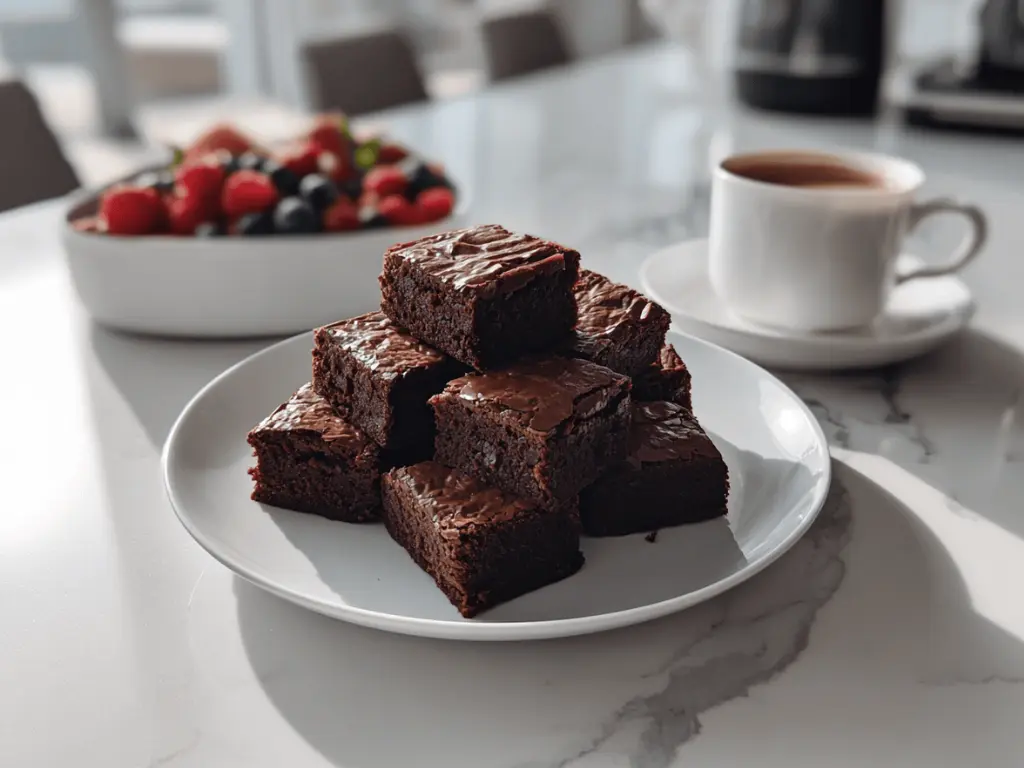Low calorie brownies prove that dessert and wellness can live side by side. Growing up in a big Southern family, dessert was a way to connect. The smell of chocolate baking meant that love was in the air. When I began focusing on healthier cooking, I promised myself one thing: flavor would never disappear from my kitchen.
These brownies honor that promise. They are rich, dense, and chocolatey, yet crafted with simple wholesome ingredients such as Greek yogurt, unsweetened cocoa powder, and a touch of natural sweetness. By using yogurt instead of butter and a light sweetener instead of sugar, each bite stays moist and indulgent while keeping calories in check.
Whether you are chasing wellness goals or simply want a healthy brownie that fits your calorie deficit, this recipe shows that balance is not about restriction. It is about smart choices, mindful ingredients, and every chocolate bite feeling worth it.
Ingredients and Smart Substitutions
Creating low calorie brownies begins with choosing ingredients that bring richness and moisture without unnecessary calories. Every item on this list was tested to keep the flavor deep and satisfying while staying light and balanced.
Core Ingredients
- 1 cup oat flour or finely ground rolled oats
- ½ cup unsweetened cocoa powder
- ⅓ cup zero calorie sweetener such as stevia or monk fruit
- ½ cup plain Greek yogurt
- ¼ cup unsweetened applesauce
- 2 large eggs
- 1 teaspoon vanilla extract
- ¼ teaspoon salt
- ¼ cup dark chocolate chips or chopped dark chocolate (optional)
Ingredient Swaps for Lighter Baking
| Traditional Ingredient | Smart Swap | Why It Works |
|---|---|---|
| Butter | Greek yogurt or applesauce | Adds moisture and richness with less fat |
| Sugar | Stevia or monk fruit sweetener | Keeps sweetness high with almost no calories |
| White flour | Oat flour or almond flour | Boosts fiber and reduces simple carbs |
Tips for dietary needs
- For a dairy free version, use coconut yogurt.
- For gluten free baking, select certified gluten free oat flour or almond flour.
- To make it higher in protein, add one scoop of your favorite protein powder and reduce cocoa by one tablespoon.
Each swap changes the nutrition in a meaningful way. The result is a brownie that tastes decadent but aligns with your health goals.
Step by Step Baking Guide
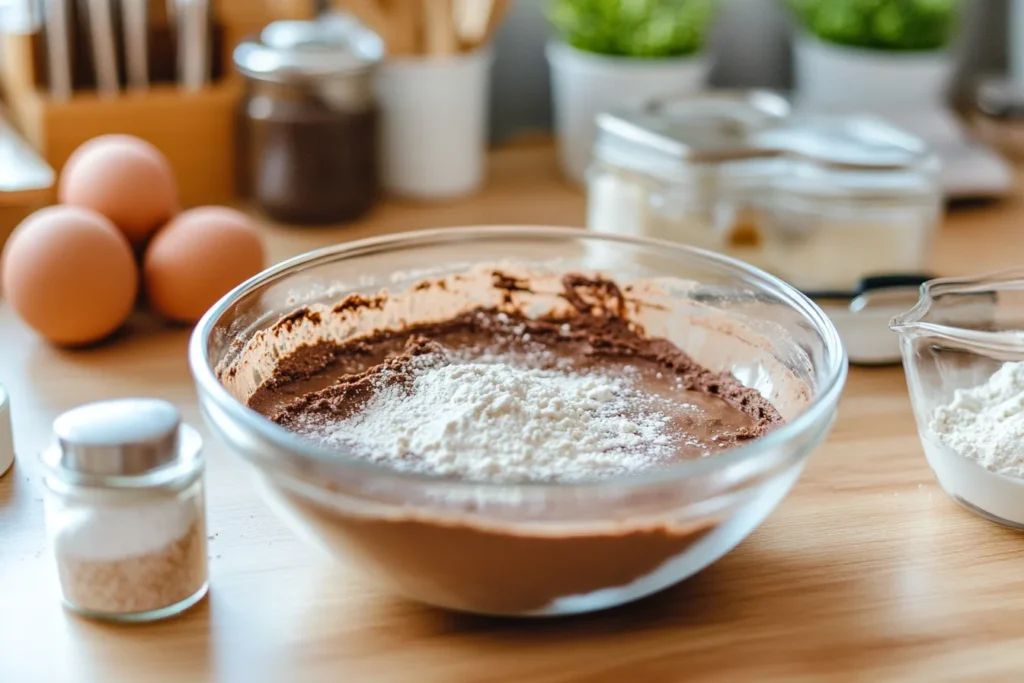
Once you gather your ingredients, the rest is simple and rewarding. Baking these low calorie brownies is all about gentle mixing and mindful timing to keep every bite soft and rich.
Step 1: Prepare your pan and oven
Preheat the oven to 350 degrees Fahrenheit. Line an eight inch square baking pan with parchment paper and lightly coat it with a nonstick spray. This makes it easier to lift the brownies once cooled.
Step 2: Combine the wet ingredients
In a large bowl, whisk together Greek yogurt, eggs, applesauce, and vanilla extract until smooth and creamy. These wet ingredients add natural moisture and structure to the batter.
Step 3: Mix the dry ingredients
In a separate bowl, sift oat flour, cocoa powder, sweetener, and salt. Sifting keeps the texture light and prevents dry spots in the final brownies.
For another simple and balanced baked treat, try our Oatmeal Yogurt Muffins which pair perfectly with your low calorie brownies for a healthy brunch.
Step 4: Combine and fold
Pour the dry mixture into the wet ingredients. Stir gently until just combined. Overmixing can create dense brownies, so fold slowly until no flour streaks remain.
Step 5: Add chocolate pieces or nuts
If you like a deeper chocolate flavor, fold in a few dark chocolate chips or chopped walnuts. This adds a touch of richness without overwhelming the calorie balance.
Step 6: Bake and cool
Spread the batter evenly into the pan. Bake for 18 to 22 minutes or until a toothpick comes out slightly moist. Allow to cool completely before slicing to lock in the fudgy texture.
Step 7: Portion and store
Cut into 12 equal squares for portion control. Store in an airtight container at room temperature for three days or refrigerate for up to one week.
Pro Tip: For an even denser texture, let the brownies rest overnight before serving. The flavor deepens as the cocoa and yogurt blend together.
Flavor Twists and Variations
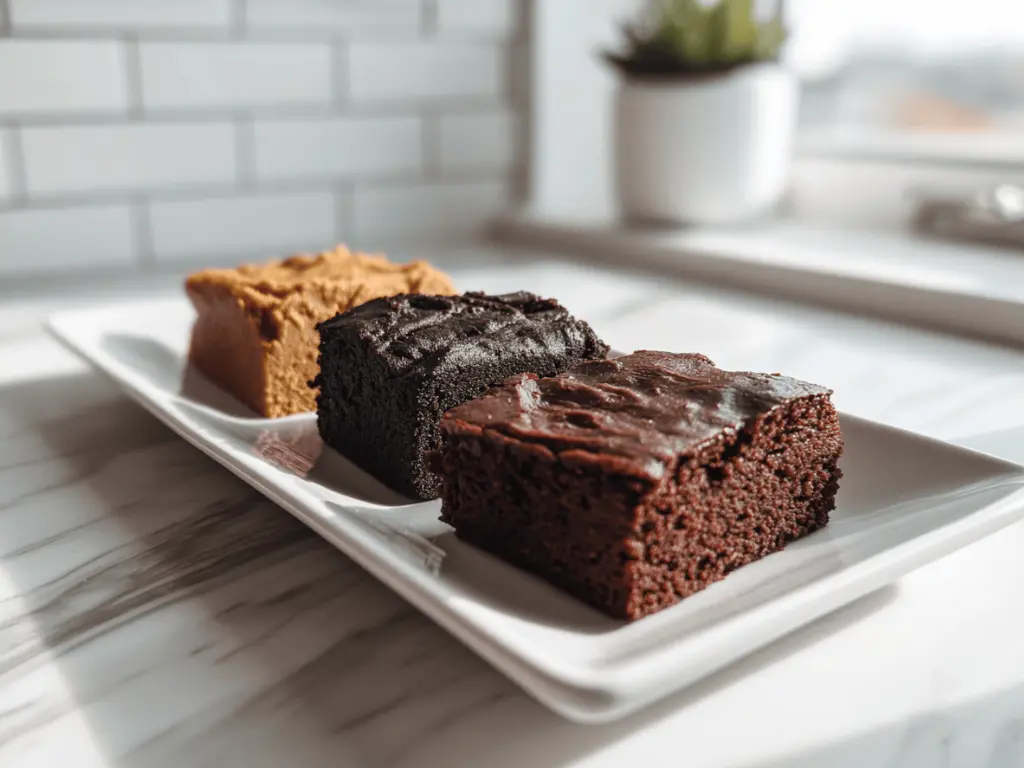
The beauty of low calorie brownies is how easily they adapt to your cravings. Once you master the base recipe, you can experiment with different ingredients to suit your taste or your nutrition goals. Each variation keeps the texture rich and the calories under control.
Protein Brownies
Add one scoop of chocolate or vanilla protein powder to the batter and reduce the cocoa powder by one tablespoon. This turns each brownie into a balanced snack with a boost of protein for recovery or post-workout energy.
Keto Brownies
Replace the oat flour with almond flour and use an erythritol based sweetener, a low calorie sugar alcohol often used in keto desserts according to Healthline. These brownies stay dense and rich while keeping carbohydrates very low. For extra flavor, sprinkle a little sea salt on top before baking.
Sweet Potato Brownies
Blend half a cup of cooked and mashed sweet potato into the wet ingredients. It adds natural sweetness, fiber, and an incredibly soft texture. The mild sweetness pairs beautifully with dark cocoa.
Espresso Brownies
Stir in one teaspoon of instant espresso powder with the dry ingredients. The coffee enhances the chocolate flavor and creates a deeper, more aromatic taste.
Orange Zest or Sea Salt Finish
For a bright and elegant twist, add a teaspoon of fresh orange zest to the batter or sprinkle flaky sea salt on top before baking. These small details transform the flavor without changing the calorie count.
Each version shows that healthy baking can still be creative and joyful. Whether you prefer classic chocolate or a bold flavor profile, these brownies prove that indulgence can be smart and satisfying.
For more dessert inspiration that fits a healthy lifestyle, visit our Desserts Collection. It gathers recipes that combine rich flavor with mindful nutrition just like these brownies.
Serving, Pairings and Storage
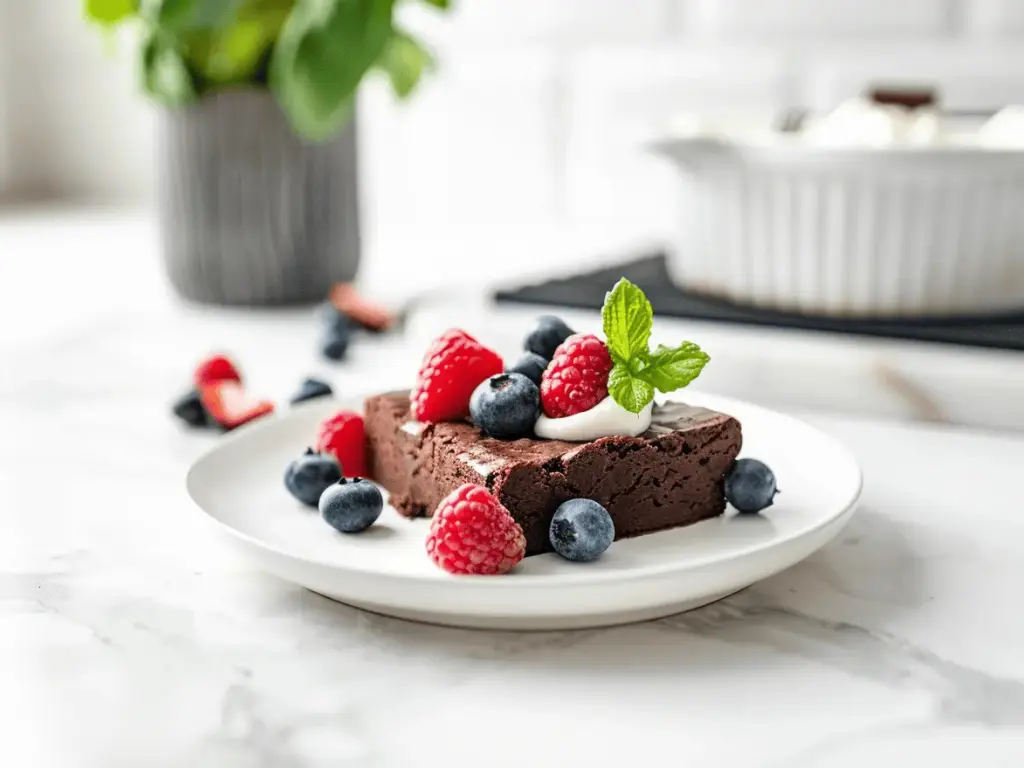
Brownies may be a treat, but when made lighter they can fit easily into a healthy lifestyle. How you serve and store them can make a big difference in both flavor and portion awareness.
Serving and Pairing Ideas
- With Greek yogurt and fruit: Pair one square with a spoon of Greek yogurt and a handful of berries for a balanced snack that adds protein and natural sweetness.
- With coffee or espresso: The bitterness of coffee highlights the deep cocoa flavor and satisfies a dessert craving without extra sugar.
- As a post-workout treat: When made with protein powder, these brownies give your body quick recovery fuel while still feeling indulgent.
- As part of a dessert platter: Combine bite-sized brownies with fresh fruit and a drizzle of melted dark chocolate for an elegant yet mindful dessert spread.
Portion control matters. Cut the pan into smaller squares and enjoy one or two pieces rather than large café-style servings. Every piece feels satisfying when enjoyed slowly and mindfully.
Storage Tips
Keep brownies in an airtight container at room temperature for up to three days. For longer freshness, store them in the refrigerator for up to a week or freeze for as long as three months. To enjoy later, thaw at room temperature or warm briefly in the microwave for a soft, just-baked texture.
If you prefer extra fudginess, store them in the refrigerator overnight. The cool rest deepens the chocolate flavor and creates a texture similar to a truffle.
Nutritional Benefits and Calorie Comparison
The real strength of these low calorie brownies lies in the way simple ingredient swaps reshape their nutrition without changing their rich flavor. By replacing butter with Greek yogurt and sugar with natural sweeteners, you reduce calories and fat while adding protein and moisture. The result is a dessert that feels indulgent yet supports a balanced lifestyle.
If you enjoy wholesome baked treats, the same mindful approach appears in our Oatmeal Yogurt Muffins and Coffee Cake Muffins. Both use oats and yogurt to achieve a soft texture while staying light and satisfying.
Calorie and Macro Comparison
| Version | Calories | Fat (g) | Carbs (g) | Protein (g) | Sugar (g) |
|---|---|---|---|---|---|
| Store Brownie (average) | 280 | 15 | 34 | 3 | 24 |
| Homemade Traditional Brownie | 210 | 12 | 28 | 4 | 18 |
| FlavorMenus Low Calorie Brownie | 90 | 3 | 10 | 5 | 3 |
Nutritional Highlights
- Protein boost: Greek yogurt and eggs increase protein, keeping you satisfied longer.
- Lower fat: Reduced butter and dark cocoa keep richness without excess oil.
- Balanced sweetness: Zero calorie sweeteners reduce sugar but preserve taste.
- More fiber: Oat flour and applesauce add texture and help digestion.
For a light breakfast pairing, try one brownie with our Cottage Cheese Eggs. The protein in the eggs balances the sweetness of the brownie, creating a complete and energizing meal.
These healthy brownies show that dessert can be a part of balanced eating. By using simple, natural ingredients, you can enjoy a chocolate treat that fits your goals without losing the joy of baking or sharing it with others.
Frequently Asked Questions (FAQ)
Are brownies healthy for weight loss?
Brownies can fit into a weight management plan when made with wholesome ingredients and eaten in moderation. Choosing low calorie brownies made with yogurt, oats, and natural sweeteners helps reduce fat and sugar while adding protein and fiber, allowing you to enjoy dessert without breaking your calorie goals.
Can I eat a brownie on a calorie deficit?
Yes. The key is portion control. A small square of a low calorie version can fit easily into a calorie deficit plan. Focus on nutrient balance throughout the day and treat the brownie as an occasional reward rather than a daily habit.
Can I use yogurt instead of butter in brownies?
Absolutely. Greek yogurt adds moisture and structure without the heavy fat of butter. It makes brownies creamy and soft while lowering overall calories. You may notice a slightly lighter crumb, but the flavor remains rich and satisfying.
How many calories are in one brownie?
One square of this low calorie brownie contains about 90 calories. A traditional brownie can reach 200 or more, mostly from butter and sugar. Choosing lighter ingredients cuts nearly half the calories while keeping the same chocolate intensity.
Conclusion
Making low calorie brownies is more than a recipe. It is a small celebration of balance, creativity, and love for real food. These brownies prove that healthy baking can still be rich, chocolatey, and deeply satisfying. You do not need complicated diets or flavorless desserts to stay on track.
Each ingredient in this recipe has purpose. Greek yogurt brings protein and moisture, oat flour adds texture, and natural sweeteners keep the sweetness alive without the sugar spike. Together they create a dessert that tastes indulgent yet supports wellness goals.
Healthy cooking should feel joyful and inclusive. So gather your ingredients, share the experience with family or friends, and let every bite remind you that smart choices can still taste like comfort.
Save this recipe for your next baking day or share it with someone who loves dessert but wants to stay mindful. Explore more creative, healthy recipes on FlavorMenus that blend flavor and wellness with every dish.
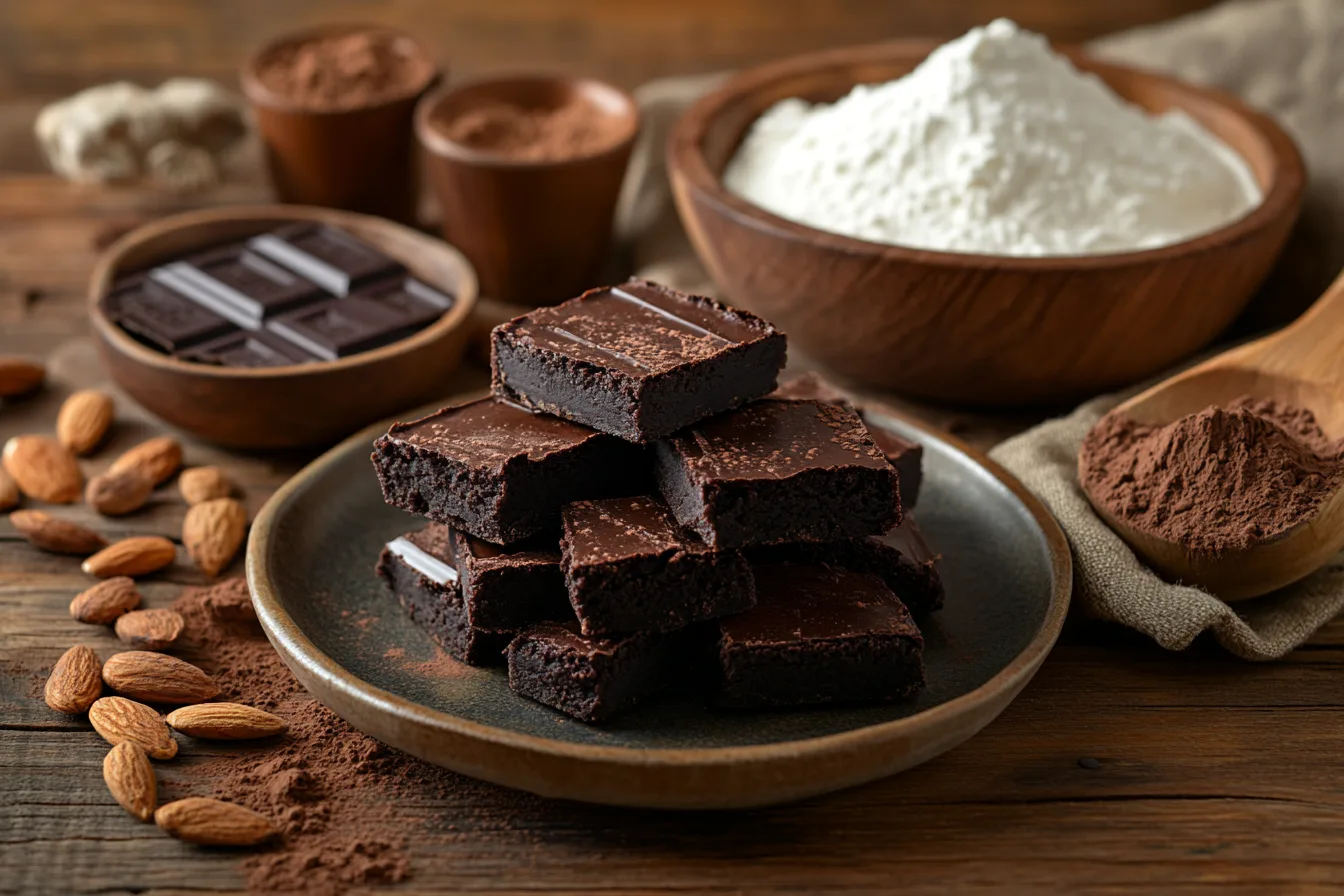
Low Calorie Brownie
Ingredients
Equipment
Method
- Preheat the oven to 350 degrees Fahrenheit. Line an eight inch square baking pan with parchment paper and lightly coat it with nonstick spray.
- In a large bowl, whisk Greek yogurt, eggs, applesauce, and vanilla until smooth and creamy.
- In another bowl, sift oat flour, cocoa powder, sweetener, and salt to remove lumps.
- Combine dry and wet ingredients gently until no flour streaks remain.
- Fold in dark chocolate chips or nuts if desired.
- Spread the batter evenly into the prepared pan and bake for 18 to 22 minutes or until a toothpick comes out slightly moist.
- Cool completely before slicing into 12 squares. Store in an airtight container at room temperature for three days or refrigerate for one week.

